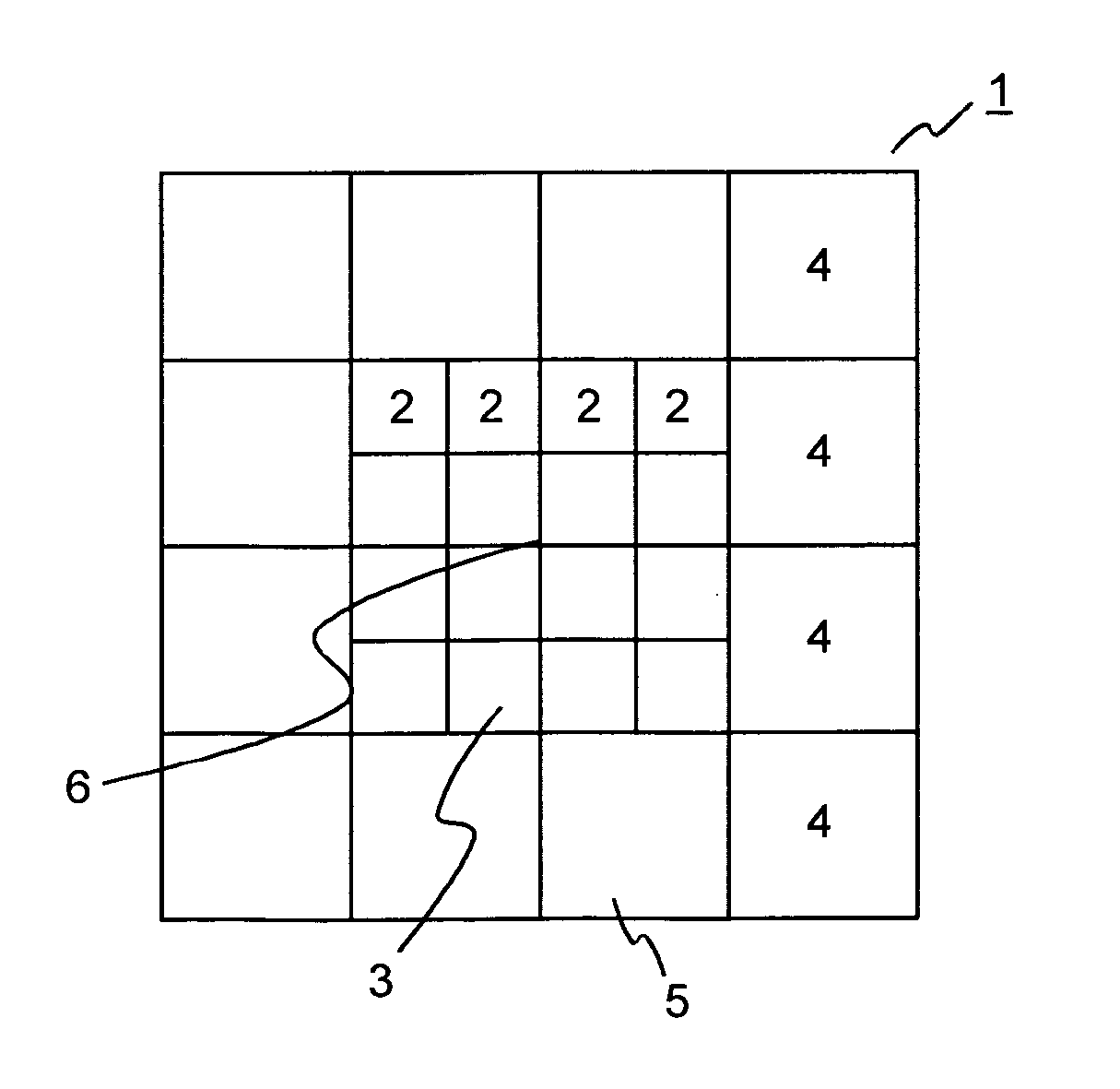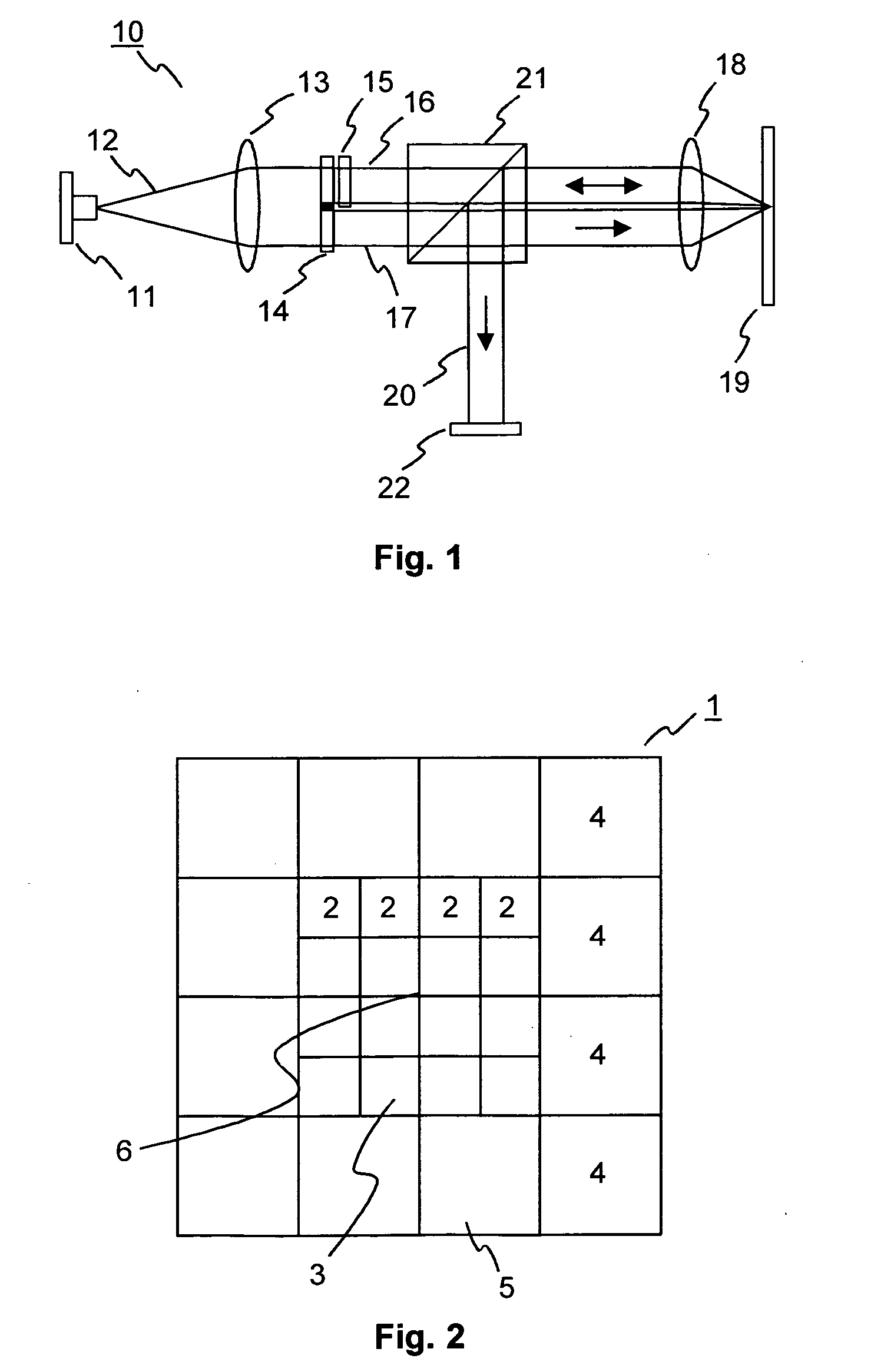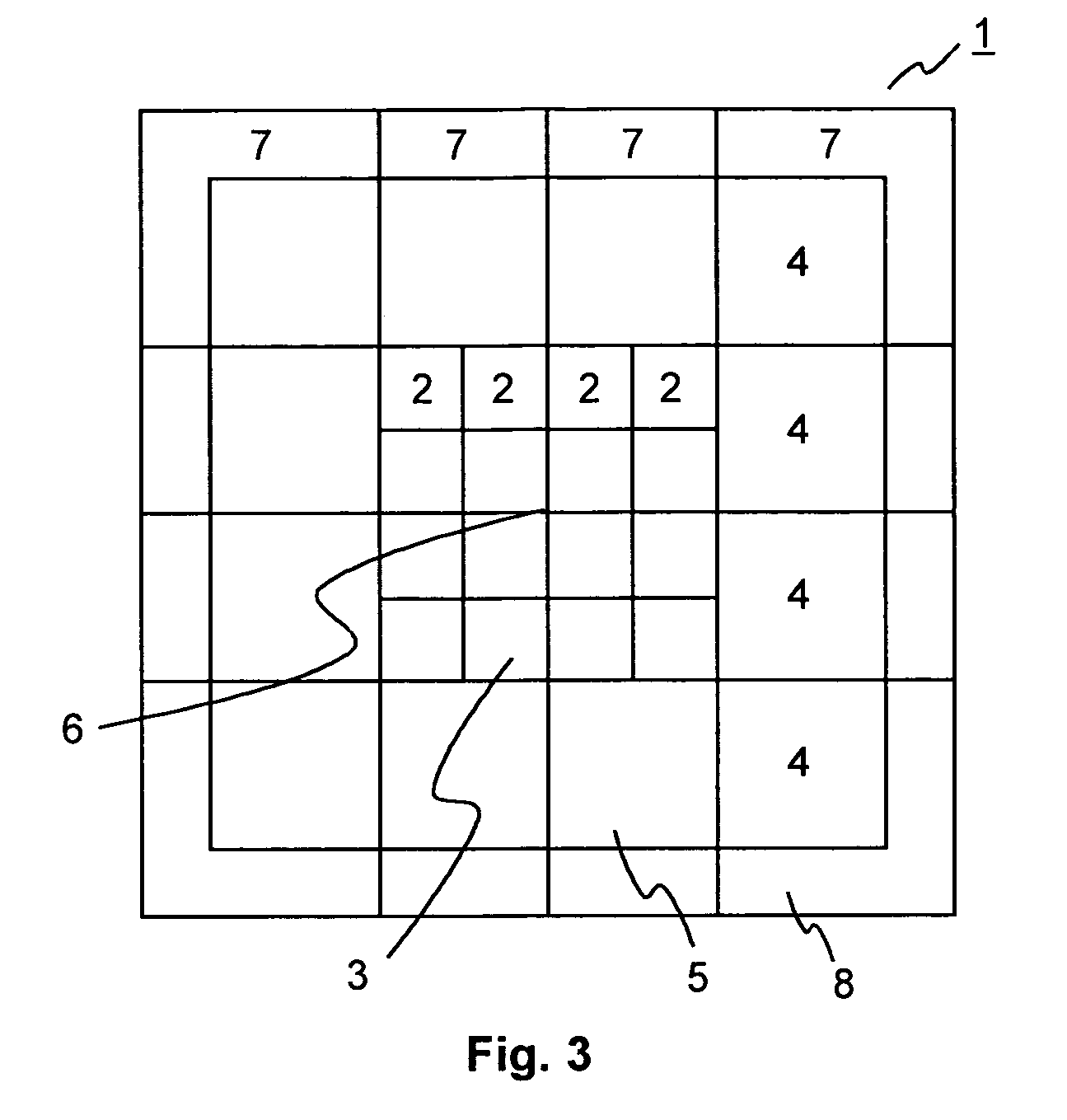Holographic storage medium
a technology of holographic storage and data, applied in the field of holographic storage media, can solve the problems of loss of data density in other parts of the data page, cross talk from adjacent recorded holograms, etc., and achieve the effect of high quality
- Summary
- Abstract
- Description
- Claims
- Application Information
AI Technical Summary
Benefits of technology
Problems solved by technology
Method used
Image
Examples
Embodiment Construction
[0030] In holographic data storage digital data are stored by recording the interference pattern produced by the superposition of two coherent laser beams. A schematic illustration of a holographic storage system 10 is shown in FIG. 1. A source 11 of coherent light, e.g. a laser diode, emits a light beam 12, which is collimated by a collimating lens 13. The light beam 12 is then divided into two separate light beams 16, 17. In the example the division of the light beam 3 is achieved using a beam splitter 14. However, it is likewise possible to use other optical components for this purpose. A spatial light modulator (SLM) 15 modulates one of the two beams, the so called “object beam”16, to imprint a 2-dimensional data pattern, i.e. a pixel array. Both the object beam 16 and the further beam, the so called “reference beam”17, are focused into a holographic recording medium 19, e.g. a holographic disk, by an objective lens 18. At the intersection of the object beam 16 and the reference...
PUM
 Login to View More
Login to View More Abstract
Description
Claims
Application Information
 Login to View More
Login to View More - R&D
- Intellectual Property
- Life Sciences
- Materials
- Tech Scout
- Unparalleled Data Quality
- Higher Quality Content
- 60% Fewer Hallucinations
Browse by: Latest US Patents, China's latest patents, Technical Efficacy Thesaurus, Application Domain, Technology Topic, Popular Technical Reports.
© 2025 PatSnap. All rights reserved.Legal|Privacy policy|Modern Slavery Act Transparency Statement|Sitemap|About US| Contact US: help@patsnap.com



